Oftentimes, it’s the simple things that are the most powerful. My guest today, Allan Dib talks about how having a plan that gives you clarity can truly transform your business. In this episode, we get into a really great conversation about everything from the key principles behind Allan’s wildly successful book, The 1-Page Marketing Plan, to ways to gauge the success of a marketing initiative, to the Art of War.
We talk about the complexities–and also the basics–of understanding who your customer is, what your end game is, and what the actionable strategies are that can get you there. Allan Dib is a serial entrepreneur, rebellious marketer, technology expert, and author. He has started, grown and successfully exited multiple businesses in various industries, one of which was named by Business Review Weekly as one of Australia’s fastest-growing companies.
As a highly sought after business coach, consultant, and public speaker, he frequently shares his proven strategies and cutting edge tactics with people all over the world. Allan is here today to talk about his #1 bestselling book, so stay tuned to discover everything you ever wanted to know about creating a rock-solid marketing plan (and may have paid way too much money in the past to try to find out)!
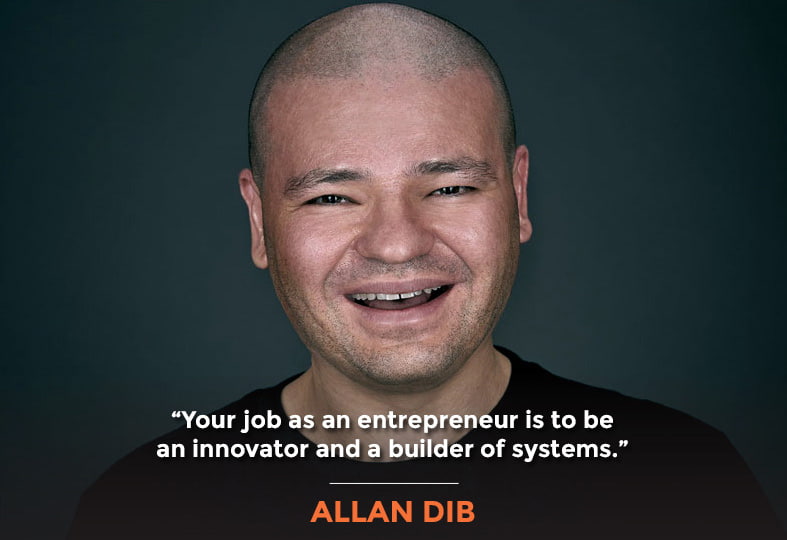
Transcript
Allan, welcome to the show. Thanks for being here.
Thank you, Stephan. It’s a pleasure to be on your show.
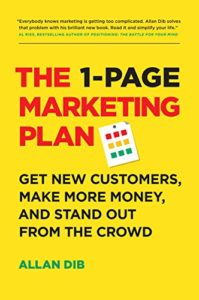
You have this great book called The 1-Page Marketing Plan and that evokes some cognitive dissonance there because aren’t marketing plans supposed to be pretty exhaustive, comprehensive, deep into the weeds of statistics and trends, and competitor analysis and so forth, and you’re talking about it being a one-pager? How does that work?
That’s a great question, Stephan. That’s a question I often get and it’s something that I used to think myself. I remember in my first business, I hired a consultant to help me put together a business plan and a marketing plan. I spent many thousands of dollars, we spent months doing it. We put together a plan that was probably 70 pages long and had charts, graphs, projections and all of that.
Guess what happened to that plan? It got shoved in the top drawer of my desk, never to see the light of day again until we were moving offices and getting out of there. I opened my drawer, dust it off and then threw it in the trash thinking, I can’t believe I wasted all the money with that consultant.
To me, the best kind of plan is the plan that you will use. It’s not something that has to be War and Peace, but it’s something that’s easy for you to understand and practical to use.
That makes total sense. Reminds me of a quote I’m probably going to butcher it, but it’s something like, “We don’t rise to the occasion, but we fall back on the highest level of our training or preparation,” something along those lines. If we don’t have an implemented plan, we get nothing.
Exactly. Another quote that I often quote is, “Knowing and not doing is the same as not knowing.” You might as well not bother if you’re not going to implement. It’s a plan that you will actually use.
In fact, long before this was a book, this was a process that I was using with my clients. Why? Because I was trying to get my clients to create marketing plans and, of course, I got pushback. It was like, “No, too difficult.” “Too hard.” “Too expensive.” “I’ll do it another time.”
By necessity, I created a plan that they could quickly do in 20-30 minutes, that would be practical, that they wouldn’t shove in their desk drawer, could sit on their desk, could be pinned up in their office, that was practical. When you get more and better information, you could update that plan at any time. You didn’t have to rework through 70 pages and involve consultants.
When you got better information about who your target market is, or a messaging that lands better with your target market, then you can update that plan at any time and have all of your people on the same page as well.
That sounds great. Does this actually happen? You get reader feedback saying, “We’ve implemented. We got so much value. We got a 10 bazillion percent ROI from the cost of the book,” or something like that?
Your job as an entrepreneur is to be an innovator and a builder of systems. Share on XLiterally, every single day—I’m not making this up—I opened my Gmail and I have what I call fanmail, for lack of another word. It’s like, “Wow, this process really clarified things for us. It gave us a structure.” When I look at some of the reviews on Amazon, people are talking about the book having delivered more clarity to them than the years that they spend getting an MBA. No, I’m not pumping my own tires; that’s the words of other people. It’s not because I invented anything or created something. Literally, I took direct response marketing and made it accessible on a single page canvass. That’s what I did.
I didn’t invent direct response marketing, I didn’t invent planning or anything like that, but I created a breakthrough in the way that people think about direct response marketing and plan that out. That has been something that a lot of people have been wanting because direct response marketing is complex. It has a lot of moving parts.
I remember when I was first learning it in my first business. I attended a seminar, read a book, or listened to a mentor. I always get value from all of those. I’m not putting any of those down, but there was nothing that really took me on the journey from step one, step two, step three, what do I need to do? What process do I need to follow to get new clients in the door?
I created the process and wrote the book that I wish I had when I was trying to get new clients in the door and not knowing how to do that.
Right. The book has sold how many copies now?
I think we’re getting about a quarter of a million copies now.
That’s serious.
I haven’t looked at the stats lately, but it was around a quarter of a million copies last time I looked.
How are you leveraging that in your business? I don’t know of many authors who make a really substantial living just from selling their books. I’m sure there are some out there, but maybe you’re one of them?
There are some out there and I am one of them.
I do six figures just from book royalties and a decent six figures. I know another author who does seven figures from just book sales, but book sales are not my main business. It’s a nice business unit on its own, but having said that, you’re right, these results are not typical. The typical author generally doesn’t make a lot from book royalties and book sales.
I do leverage that into my coaching. I’m releasing a course based on the book. I have a lot of back-ends. The vast majority of my revenue is back-end. Even though the book does pretty well, the vast majority is back-end. It’s people who’ve been through the book or heard me on a podcast like we’re speaking now, or been through my process somehow, or seen me speak, or whatever else. We basically have a conversation and see if we’re right for each other.
I think having a book is something that really can fill your inbound marketing. First of all, it’s a great positioning tool. If what you’ve got is something that helps people, it’s going to create inbound leads. Literally every day, I open my inbox and I see these people who just say, “Thank you. It changed the way I think,” and all that sort of stuff.
There are people who say, “Hey, do you offer coaching? Do you offer a course?” and literally, we had to look at our website right now. We don’t have any of that stuff published on the website because I’m pretty selective of who I work with. I think that’s a fun way to do business where you open your inbox and there are people who are asking you to work with you rather than you waking up in the morning and thinking, “Right, I’ve got to do 20 cold calls today to get someone in and convince them to do business with me.” It’s a really fun way of doing business.

It certainly is. It puts you in the driver’s seat for your own destiny. If you’re making the decision whether you’re going to work with and you’re not in desperation mode, just trying to pay the bills, that gives you some significant leverage.
I’m curious, what are these back-end offerings and how are they structured? Is it some sort of funnel with multiple upsells? Is there a super high-level, high-ticket program? Maybe some sort of elite mastermind or something like that? How do you have these all structured?
It feels weird as a marketer saying this, but we don’t have any crazy funnels with upsells, downsells, and all of that sort of stuff. I mean, we get more sophisticated as we go, but what I find when you have an offer that converts, it’s about having conversations with people and conversations lead to conversions.
In terms of the specific offerings that we have, I’ve got a program called Business Boardroom. That’s when me and my team work very intensely with a business owner and the business owner is usually someone who’s doing between $1–$20 million in revenue. They’ve already got a business that’s working, they’ve already got an offer that converts, and we really just light the fire in terms of putting together a tactical plan, a strategic plan, and getting them the right people in place in their business.
Almost every business owner I’ve ever spoken to has had the circumstance where they’ve engaged in an external marketing agency and maybe they’ve done some good work for them, they’ve redesigned their website, logo, whatever, but when they look at the return on investment, it’s usually not being there.
I highly believe that you, as the business owner, need to own the marketing strategy. It doesn’t mean you have to do all of the stuff, but you need to know what the strategy is. Developing your own internal marketing capability is so critical. That means investing in team members. It doesn’t mean that you have to have all the people who are technical, copywriters and all of that in-house.
For example, we employed someone who was a specialist graphic designer to help us with our rebrand. That’s an external person. But for the operational stuff, you want to develop your own marketing intellectual property. You don’t want to be reliant on an external marketing agency. Even if they’re doing a really good job, you don’t want to be reliant on someone who may not be doing a good job in the future.
I’m not against agencies. I love agencies, I use agencies, and I train agencies. I believe the days of the generalist marketing agency are over, and now is the time when specialist marketing agencies are really the people that you want to work with. I talk about this when it comes to media strategy. I say, “Look, hire the person who’s a pay-per-click specialist. Hire the person who’s an SEO expert.” The days of having just a general marketing agency who’s just doing everything, I think those days are over.
My whole value proposition is, me and my team will help you build your internal marketing capability so that you’re not beholden to someone else. No one will ever care about your business and run your business the way you do. That’s what we do in the Business Boardroom Program. We really work intensely on helping business owners develop their own internal marketing capabilities.
That’s really important. You know what they say, “You’re a jack of all trades, you’re a master of none.” If your agency says, “Oh yeah. We’re great at SEO, great at paid search, paid at social media, great at 15 other things as well,” they almost invariably suck at all of them.
No doubt. I look at someone like you, you’re at the top of your game when it comes to SEO. I can’t think of anyone who would even come close. You know how much time and energy that you spend on learning and staying, cutting edge with all of that. There’s no possible way that someone can be at your level in SEO, then at that level in LinkedIn, then at that level in pay-per-click, and then at that level in copywriting. It’s humanly impossible. If you’re going to work with high-level people, they’re usually specialists and not going to be generalists.
Right. You get even more specialized as your standards increase. Let’s say that you’re working with a pay-per-click agency and they handle both your Google Ads and your Facebook Ads. They’re probably not top-shelf in both.
Exactly.
Even just with Google Ads, which would include YouTube Ads, Google Display, and Google Search Ads, you find at the top people specialize even in that little niche. We mutually know one of the top YouTube advertising agency owners in the world.
And even within the media, they specialize. I was talking to someone the other day, and they do LinkedIn, but they only do LinkedIn outbound. They’re not working on LinkedIn inbound. You can be a sub-niche of a niche. I think we’re going to see more of that. They purely specialize in cold outbound LinkedIn. They’re not worrying about how you set up your profile, they’re not worrying about some of the content that you’re posting, videos and all of that, they’re purely focused on cold outbound. Whereas others are more focused on the content side and things like that.
The point being is people want to work with specialists. Who’s the specialist in this field rather than someone who just has a laundry list of products and services, is a generalist, and does everything in a mediocre fashion.
You have only twenty-four hours a day, so the only way you can get more achieved is by also using other people’s time. Share on XRight, but then which specialists do you end up working with? Which categories and which experts within each of those categories because you could be doing Pinterest and Reddit, everything else, like 15 different social platforms and then you could do all these different paid media platforms as well. You could be doing SEO and offline advertising, magazine ads, billboards, and that just goes on. Where do you stop?
This is where having a plan that gives you clarity works. I’ll give you an example. The house that I’m currently living in, I moved in about six months ago, we spent about two years building it. That’s another story on its own.
That happens a lot apparently. I hear a lot of horror stories.
Building stories are never fun stories. Anyway, we would digress too much if I went into that. The point I want to make is the first six months, nothing happened. We spent six months working with the architect, working with the council, arguing with the council. We’re working with the architect and we were figuring outright, where the garage is going to go, where the pool is going to go, what’s the balcony going to overlook and all of that sort of thing.
We spent a lot of time planning it out. We built the house before we ever built it. If we had just started laying bricks, digging foundations and all of that without a plan, without a blueprint, that would’ve been a disaster. Still, even with a plan and a blueprint, it doesn’t know where he’s going to plan. Having said that, you need that plan, you need that blueprint, and that will inform that tactical side.
We worked out with the architect. We’re going to have brick here, we’re going to have concrete here, and all of that. From that plan, from that blueprint, from that high-level strategy, now we know what we need to do tactically.
That’s exactly the same with marketing. We want to figure out who’s our target market. What’s the messaging that’s really going to land with them and work with them? That will inform a lot of the media that we used and the tactics that we used. We found out they hang around on LinkedIn a lot, so we worked with LinkedIn. We decide what media we use. We want to get more inbound leads, so we work on SEO.
The strategy is going to dictate the tactical. Whereas a lot of people do it the other way. They do random acts of marketing. “Let’s do a rebrand, let’s do a website, let’s try a bit of SEO, let’s do a little bit of pay-per-click.” They do random stuff and then they’re surprised when they get random results. When you ask them, “Who’s your target market?” And they’ll say, “Everybody! A doctor, a lawyer, a medical guy, agency or whatever. I can help everyone, right?”
The point being is if you do random active marketing, you’re going to get random results. Your strategy will dictate the tactics that you use, rather than you being driven by tactics, which is chasing that bright, shiny object. Today, Pinterest is hot so we do Pinterest. Tomorrow it’s Instagram. After that, it’s TikTok or whatever other platforms are coming out.
I’m not saying any of those things are bad. You should do a lot of that stuff. You should do LinkedIn, you should do SEO, you should do pay-per-click, but you need to know where this fits into your overall strategy. That’s going to inform the tactical side and the tactics that you can implement and use.
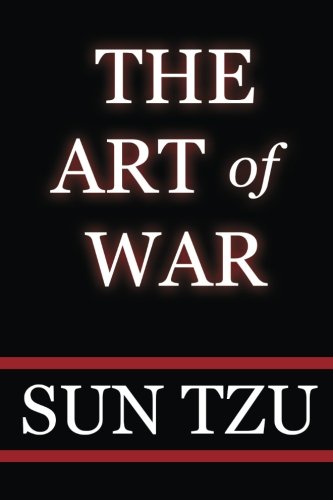
A lot of my listeners have heard this quote before because it’s one of my favorites. It’s from the Art of War. “Tactics without strategy is the noise before defeat.”
That’s beautiful. It’s 100% right. Exactly.
I was talking with a new client just the other day and we were talking about demand generation. I was bringing that up as a topic because what he was describing is that he was going to create a new category. They’re in this particular market, not an unknown market. It’s got some popularity. There is some search volume there if you do the keyword research, but they wanted to create this subcategory or this related category that is very unusual. It spans multiple categories and even has a name for it that sounds cool and mysterious, but it’s not a term that anyone has ever used in conversation.
My concern here is that you’re not going to get any traffic for a keyword like that. Nobody knows what that is. Nobody’s used that in a sentence. You’re going to have to do demand generation. I gave this example of how Mr. Rogers was not a popular search keyword or search query for quite a while until the movie came out, the documentary about him, and then search volume really spiked. That was an example of a demand generation where folks creating the movie created the demand for that search volume and not the other way around. He’s like, “Yeah. We got to do that.”
How do you do something like that if you’re just trying to tactically chase after the next shiny object to these random acts of marketing? It’s just going to be a colossal waste of time and money. What would you tell this guy how to blaze a path forward with that new category they’re thinking of creating?
My advice would be, yes, it is possible to create a new category. Yes, it is possible to create demand and new mindshare in an audience, but it’s very difficult, it’s very expensive, and it takes a lot of time. I think the deodorant industry spent millions and millions of dollars and probably 50 years to convince everybody that they smell and that they have to be buying deodorant and using it every day. Now, there’s a demand for it and they’ve created that demand and it does work. But it’s very difficult and very expensive to do.
I prefer to tap into existing demand. I prefer to find a market where there’s a gap. It’s what they call a market that’s an inch wide and a mile deep. It’s like a long tail, but there are a lot of people who are interested, there are a lot of people who are searching for a solution there and just tap into that market.
If you open a brand new restaurant, your dream come true is a starving crowd. You want to tap into the existing demand. You don’t want to convince people who are already full to come and buy your food if your restaurateur. You want to tap into a market that’s already hungry that they just line up and they buy what you’ve got. I think the demand generation is possible, but it’s very difficult and very expensive, and I don’t think it’s the best way to do marketing. I would rather tap into existing demand. And there is always a gap in the marketplace where you can tap into.

Right. I agree with you. I think it’s a harder row to hoe. I’m not against them doing it. I just don’t think that that’s the easiest path to cash. Speaking of which, how would you recommend they (or anyone listening) gauge the success of any of their marketing initiatives? ROI is crucially important, return on investment, but there are different ways of measuring return on investment or even different acronyms like ROAS (Return on Ad Spend) and so forth. How do you recommend these listeners to start tracking a baseline and that delta that will show what they’re doing is actually working and profitable?
It really gets back to what your goals are. As funny as it sounds, the goal of your company may not be to generate profit. I’ll give you an example. This is particularly prevalent in Silicon Valley, where your goal is just to get market share, get the number of users up, the number of people going because your monetization strategy is selling out or a billion dollars to Google or Facebook.
Monthly active users.
Monthly active users and all of that. If that’s your strategy, then losing money on acquiring users or customers is not a problem. Whereas other businesses that are cash-flow style business, the only measure that really matters is the return on investment. Return on investment can be a difficult thing to calculate because attribution is not a perfect science. Sometimes, especially if you’re advertising across multiple channels, figuring out what channel triggered somebody to buy. Is it your TV ad or was it your internet ad that made them buy? Or was that a combination of both? Attribution can be tricky.
It really depends on what’s the goal of your business. Is your goal with your business is to make a profit? Is it to be a lifestyle business? Is it to get as many users as possible and cash out? Really comes back down to the planning process. What do you want to do? How was this going to end, basically? That’s part of what I talk about in The 1-Page Marketing Plan.
Neil Armstrong said, “There are only two problems we need to solve when going to the moon: it was how do we get there and then how do we get back. Those were the two problems we needed to solve.” So many business owners are focused on just getting there and then figure out how to get back. By that I mean, how is this business going to end? How am I going to exit this business? Because one day, you’re going to get bored, or you’re going to get sick, or you’re going to see a better opportunity, or you’re going to want to do something else, or you’re going to want to pass the business on to your kids, or you’re going to sell it. If your goals are not clear and you haven’t set up your business in a way that it is possible to exit, then you’re going to have a pretty hard time of it.
In fact, I say that if you don’t have an exit strategy, you have a job, you’re self-employed. You don’t have a business.
I’ve seen so many times, it’s just tragic. They’re really good businesses and they’re going to sell. The business is worthless because it’s all in the business owner’s head. They are the business. They don’t have a business. They are the business. It’s critical to be thinking about how this is going to end. Am I looking to sell to a bigger competitor? Am I looking to pass this on to my children? Am I looking to get franchisees on board or whatever else? Whatever your strategy is, your strategy is really going to inform what you’re going to do from a marketing perspective and what you’re going to do from a return on investment perspective.
You might think it’s okay for us to lose money for the next two years because we just want to grab market share and then when we’ve got our 30% market share, then we can basically buy out to our biggest competitors and essentially have a monopoly and own this market. That’s a strategy.
It’s going to be highly dependent on what you want to do as a business owner and what your exit is going to be.
Right. Begin with the end in mind.
Begin with the end in mind. Exactly.
Once you’ve identified what your end game is, presumably there is a process that you have created or that you walked your reader through in the book on the competitive analysis- the strategies, how to execute on all that, and how to gauge success. Can you walk us through all that? What’s the number of steps or segments to this and what are they?
Focusing on the cause (value) rather than the effect (making money). This will lead to much greater long-term success. Share on XI think it’s pretty simple. It’s a matter of you testing and measuring and getting feedback from your clients and creating that feedback loop. So many people are really hung up on their competitors. Who’s competitive with me? What’s my competitor doing? What do they have on their website? How much they’re pricing and all of that sort of thing? Jeff Bezos talks about focusing on your customers rather than focusing on your competitors.
Too many people are too focused on what their competitor is doing. I’m not saying ignore your competitors and forget about the competitive landscape, but if you can create that world-class experience for your client, if you can really deliver that, what you do is remarkable. When I say that, it doesn’t have to be something where you’re inventing something brand new that’s never been thought of before. Sometimes it’s just a little twist on something you’re already doing.
Having that feedback loop where you’re testing something, you’re measuring, and then you’re feeding that feedback back into your process, that intuitive process, that is so important. The other part of it is having that skunkworks in your business. Having that thing where you’re testing things that maybe not going to give your return on investment today. You like taking a smart bet on something that might happen in the future.
As an example, if Blockbuster Video had been smart, they would have a little project around streaming video. Just dipping their toe in, see if it’s working. When they’re seeing that the market is shifting and everything is shifting, they could have capitalized on that or acquired a company that’s in there.
Now, unfortunately, there’s one Blockbuster Video left in the entire world. It’s in Oregon and it’s become a tourist attraction. They had the audience, they just didn’t keep up with what was happening in the marketplace. They were ignoring the feedback from their customers. They wanted to keep charging fees. We all know the story. Right now, we’ve got Netflix, Hulu, all of those other services.
And Disney+ which blew away all projections with 10 million sign-ups in a matter of 24 hours or something like that. It’s insane.
They could’ve owned that market. They had the audience, they could’ve been the ones, but they didn’t have that feedback loop and that iterative process. We all know how the story ended.
This discussion reminds me of another interview I did on the show with Joey Coleman. Do you know Joey?
I don’t.
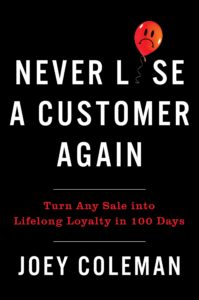
Oh, yeah. The book, yes.
Great book, great guy. He’s been a friend for years. We met through Tony Robbins’ Platinum Partnership back in 2011 or something like that, 2012. In that episode, we talked about the first 100 days of a new client or customer being critically important and what you’re doing to surprise and delight that new customer so that they feel indebted to you, embedded even, like you’re embedded within their company and vice versa, and like partners not client-vendor sort of situation. It was really a powerful conversation. Listeners, definitely check out that episode if you haven’t listened to it already.
I’m curious, what surprise and delight, remarkable things, because you alluded to Seth Godin and the Purple Cow remarkability being worthy or remark, having some point of difference. What are your remarkable points of difference that you offer your new clients in that first 100 days or whatever time period is for you?
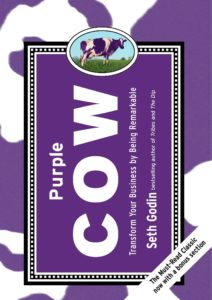
I think you’re absolutely right. I think the first 100 days is important. Even well beyond that, the clients have been with you for years and years. Like that good wife who keeps the business running and the cash flow happening. Often they ignore the ones that are ignored the most because people are always going after the new client. Whereas the old clients have been really taking care of you for a long time are often ignored.
For both segments, it’s about giving them what they want, but selling them what they need. I’m using illustrations. I may want washboard abs, six-pack abs, so I go to a personal trainer. The personal trainer says, “Well, you need a nutrition plan and an exercise plan.” They’re giving me what I need, but also what I want. That’s what I find the best business does.
As you asked the question about my own business, so often people come to me to do marketing campaigns, “Let’s plan and let’s do some marketing campaigns.” We start working together or we start talking and I find out, “Hang on, you don’t have the systems in place. Maybe you don’t have the business systems in place or maybe you don’t even have the technical systems in place. Like we need the CRM system, we need a better website, we need those kinds of things. We work on the things that you need and then we get back.”
Often, they’re not ready to run a campaign because quite simply they don’t have a lead capture, they don’t have a lead nurturing, they don’t have the processes in place or the technical system in place. We work on the sit things that they actually need so that we can give them what they want, which is new clients coming in the door, new people doing business with them.
That’s the core stuff, but then there are the peripheral things. People don’t do simple things because they’re easy to do, but they’re also easy not to do. An example of this, whenever I speak to a prospect on the phone, I’ll always send them a couple of books and a handwritten note. Literally, almost nobody does that. Something as simple as a handwritten note because this is something that’s a pattern interrupt.
People are used to sending text, or getting text, or emails, or whatever, but very few people send handwritten notes these days. It’s a pattern interrupt. When someone gets one, they’re like, “Oh, wow. This is different. This is something that’s really positioning you as different.” It taps into what Robert Cialdini talks about. He talks about what triggers reciprocity. He talks about three things. He says, “Things that are meaningful, things that are unexpected, and things that are personal.” If you hit those three, that’s something that really triggers reciprocity and people.

If I know something’s going on in your life and I wrote you a handwritten note saying, “Stephan, I hope everything went well with XYZ.” That’s something that’s meaningful to you, that’s something that’s personal to you. It’s not just a broadcast that I’ve sent to everyone. It’s usually unexpected. Those kinds of interactions I find are things that are really powerful from delivering a well cost experience.
To piggyback on that, because this is a really important point. By the way, I had Bob on this podcast. Bob Cialdini was a guest here not too long ago. That’s a great episode. When he explained personal, meaningful, and unexpected, he gave the example of a holiday card being the opposite. Where you expect that so you’re numb to it. There’s nothing memorable about it. If it’s meaningful to you, but as not meaningful to them. Let’s say a pen with your company logo and name on it, they could care less. It’s a throwaway. But if it’s got their name on it, now it’s something that they want to carry around with them. That’s meaningful. That’s also personal.
Unexpected means that if it’s not tied into any particular holiday, maybe you invent a holiday, maybe you say it’s the anniversary of the day that you signed the contract. You’ve been with us for a year. You get a little shock-and-awe package (to use Dan Kennedy terminology, shock-and-awe box). Maybe it’s got balloons and confetti and stuff. Not one of those kinds of boxes, they open up and the confetti explodes on your face. I’m not talking about that kind, although you’ll find plenty of examples of that on YouTube. The kind where you’re just like, “Wow, I feel special. I feel like I’m meaningful to you as the vendor or the service provider. It’s totally personal to me because this is my holiday. It’s totally unexpected, at least the first year.”
Yes, exactly right. We could have the whole episode on just how to deliver a world-class experience. The other path that I find is creating a bit of a sense of theater around your product and service. So many people deliver their products or services in just a boring way. It’s not about clowning around or that sort of thing, but it’s really about just creating something that’s a little bit different, like creating a bit of a wow experience.
I don’t know if you remember that example of a CD baby where they have that confirmation email when you’ve ordered a CD off of their website. I don’t think they sell CDs anymore. Instead of a boring confirmation email, “Hey, here’s your tracking number. It’ll be there soon,” like almost 99.99% of e-commerce sites do, they had this crazy story where, “Hey, we put your CD in a velvet box and it’s on its way in our private jet to you,” and all of that. Just that confirmation email created a viral sensation. It’s just about creating a little bit of theater around what you do because people will not tolerate being bored. You want to always entertain your audience as much as you want to deliver the product or service that you do.
And give them a story that they can tell others. I had Dr. Flint McGlaughlin on the show from MECLABS marketing experiments and Marketing Sherpa. As a thank you for having him on my show, he sent me a book, but it was so nicely wrapped and everything, I kept the wrapping. It’s got a wax seal on the envelope and then the book itself inside just feels like such a cool little book. It’s got a feeling of a really high-end planner and then you open up in the inside cover has this really cool design. It almost feels like a Da Vinci journal or something. That’s memorable, it’s remarkable, it’s a great story, and I’ve told it multiple times. In fact, you might have even heard me tell it if you’ve listened to a lot of my episodes.
Then there’s woot.com, which I was a huge fan of, well before it was acquired by Amazon. They had the most hilarious, awesome copywriters and copywriting. It was definitely worthy of remark. And then they had these funny, clever campaigns that they would do. They had bags of crap and everybody wanted to get the bags of crap. They were optioning a bag of crap, and that’s what they called it, a bag of crap. Then it was like mods to the flame and it was sold out within seconds. The server became unresponsive. I never ended up getting one of those bags of crap. I’m still disappointed about that. What do they call that in Australia?
A lucky dip.
Lucky dip. That’s what it is. I remember that from living in New Zealand. Some people got really cool big screen TV or something and they spent $40 or whatever the cheap price was, but they got some really cool stuff. And then there were other folks who got something that was just funny and cute, and not worth $40, but everybody proudly took photos or videos of them unboxing the bag of crap when it arrived and then posting it everywhere. It was a lot of fun.
I wholeheartedly agree with you that we got to create more theater and more wow factor with whatever our product or service is. Even if it’s boring. Do you know of a really boring product or service company that created something really theatrical and wow?
I do. Think of the Dollar Shave Club. They were selling ordinary cheap men’s razor’s the same that you’d get at Walmart or Amazon or wherever.
I thought they would beg to differ in being the same. Please proceed.
I know for a fact that they are made in the same factory as pretty much all the other razor blades. There was nothing unique about the product whatsoever, but they created a humorous campaign and all of that sort of stuff, but they put a little unique twist. Now it comes as a subscription. They tapped into men’s hatred of going to the store running out of razor blades and all of that. Now, razor blades come by subscription. You never have to worry about it. They’re reasonably priced and all of that sort of stuff. They ended up selling to Unilever for over a billion dollars. They’re not creating any crazy tech. They’re not inventing iPhones or some software as a service or anything. They’re selling the cheap standard men’s razor blades but they just do it as a subscription service.
And then there’s this squatty potty which is pretty darn boring and the opposite of sexy, really. That’s just a plastic stool that you put under your toilet. Wow, that’s pretty amazing, not. But then they hired the Harmon Brothers to create this viral video campaign which created this massive amount of demand, and buzz, and the company blew up. They became hugely successful.
By the way, Daniel Harmon, from Harmon Brothers was a guest on the show. If you’re interested in learning more about how to create viral video ad campaigns, that’s an episode worth listening to. These are all great examples, but what would you tell somebody who says, “Well, I’m not that creative and I don’t have the budget to hire some fancy Madison Avenue ad agency about as far I get is watching Mad Men. What should I do?”
You really don’t need a big budget at all. If we have to look at another example, do you remember Blendtec? They just sell blenders and there’s a guy with a camera and he’s blending weird stuff. He’s blending golf balls, blending iPhones and all of that.
One of the ways I recommend doing market research is by analyzing what your target market is actually buying or looking for. Share on XI actually know the inside story on that. That was Greg Wright, their director of marketing who was walking past the testing room one day, saw a big mess that Tom Dickson, the founder had left because he always likes to jam 2x4s into the blenders and make a big mess trying to see if he could break the blenders. There’s sawdust everywhere and shards of the 2x4s and stuff.
He thought, “We really should film this.” They spent about $100 on supplies, they already used the camera that they already had. They just bought some marbles and golf clubs and that sort of stuff, some light bulbs and things like that. And then they just started to blend these things and post some of that to YouTube. It started on a shoestring budget but having the foresight to see that this could be something that people could enjoy watching.
They did something very clever and had a lot of foresight about, and that is they didn’t just stick it up on blendtec.com. They created a whole microsite around it. They had willitblend.com, which made it a destination for the journalists, bloggers and so forth to point to, and send all the traffic, link used and so forth to there instead of just to the YouTube channel.
YouTube doesn’t need any more link equity. I think they’re pretty good with that. They don’t share any of that with us. All those external links are to us, to our sites are no-follow. They don’t pass any link equity out from youtube.com. We need to have a destination that is more enticing to the journalists, bloggers, and webmasters than our YouTube channel, or whatever the YouTube video is that they are talking about in that particular post or article. That was super smart and that causes them to get a lot more links that they probably would have if they just hang it off of blendtec.com/willitblend, funny videos or whatever, right?
Yes. The beauty of it is that they’re telling their story. I’m sure that other blenders can blend golf balls, iPhones and everything like that. That’s probably not unique to Blendtec but they’re telling a story and they’re demonstrating it in an interesting way. The point is don’t be afraid to tell your story. Don’t be afraid to tell people what goes into making your product or service, because a lot of people think, everybody in my industry does that. The guy from Blendtec might have said, “All blenders can blend the golf ball or all blenders can do this.” There’s nothing remarkable there but telling your story and showing people all the trouble that you go to make your product or service as good as it is, I think that’s a really powerful thing.
There’s something about Tom that’s really endearing. He’s the actual founder of the company. Blendtec has been around for decades. It wasn’t the first marketing they’d ever done. It was the most successful marketing they’d ever done. They’d been around, very successful, they had a whole industrial footprint as well where they were selling in bulk to restaurants and things like that. They were in good shape. But the adage that, “Facts tell, stories sell,” there was a story to get behind like, “Oh, I really like this guy. I like what he stands for. He’s just a good soul to the earth, nerdy old guy.” He’s practically giddy about taking this, at the time, an iPod and sticking it into a blender and destroying it gleefully.
That is a story worth spreading. That’s the beginning of a whole viral sensation. You can never plan for that. You can set all of the things in motion to make it feasible or possible, but you can’t control that density. It’s either going to happen or it’s not depending on how it lands with the community, how the community reacts with it, and also the external situation. If there’s some stupid tweet that gets dropped by you know who, everybody’s buzzing about that, and that was your big launch day, you can’t help that and you just lost the opportunity because everybody was distracted. Set the things up to win, but don’t assume that it’s all going to happen in the way that you want it to. Just have contingencies and all that in place as well, which is part of the marketing plan, isn’t it? Having contingency?
It is. Having something go viral and sensational and all that is all fantastic. I want to go viral within my customer base and within my audience. That’s really who matters. Fantastic if a million random YouTubers or someone watches my video or whatever, but really, who are your people? Who is your tribe? They are the people who you want to be famous within, known, and telling your story. That’s much easier to achieve than say, “Hey, I want something to go viral and everybody in the world sees it and knows about it.”
With the caveat, though, that if I can get a lot of the Linkerati, the high authority, high trust website owners pay attention to this cool thing that I created, then I’ve got serious leverage because it went viral with that community even though they may not ever buy my product or it might be completely a million miles away from my target audience. That’s totally okay because I just go that effective, the rising tide that lifts all boats, all those powerful, high authorities, high trust links pointing to my site to a particular blogpost or contest or whatever, some sort of content marketing campaign, that could be a gamechanger.
Very true. I think that’s part of what we’re doing now internally as a project is doing more and more PR on external websites. PRs become a lot easier to hack. Understanding now that newsrooms are very under the pump that got fewer resources than ever and they’ve got to produce more than ever. If you can leverage that quite easily and if you serve something on a silver platter to a journalist and it’s not too self-promotional, then 9 times out of 10 they’ll just run it. We’d been experimenting a lot with that. We’ve got motions in Forbes, Ink, business.com, Thrive Global. We’re really spending a lot more time on that. I believe, as an SEO strategy, that’s going to be powerful as well.
Have you gotten any TV appearances from doing that?
I’ve done TV appearances in Mexico when I was on my book tour in Mexico. I haven’t done any in Australia or the United States yet.
Lifetime value and customer acquisition cost are two of the key metrics you need to know to measure your marketing’s effectiveness. Share on XYou should totally do that. There is an episode on my show about this, of course, Clint Arthur. I took his workshop. I learned how to pitch TV producers, cold calling them in the middle of the night, ungodly hours, like 3, 4, 5 in the morning, because they’re getting ready for the morning show. They’re the only ones in the newsroom. The people that are working on the morning show. If you call at 4 in the morning, they’ll probably pick up.
If you have a well-rehearsed pitch and you’ve got that email ready to go, that is just only needing the email address, and if they try to get rid of you and say, “Can you just email me?” “Sure. What’s your email address? Okay got it. Did you get it? I just hit send. Can you make sure that the PDF opens?” “Okay, fine.” Then I got them. If I didn’t get them already with my awesome well-rehearsed pitch, when they said, “Send me an email,” and I was ready to go and I had just sent it and I’m like, “Can you check to see that you got it and it opens okay.” They’re like, “Wow, this is really good.”
You can get TV appearances with people who have never heard of you before and you just have a strong angle or hook that is local to their market, that is timely, so you can news jack on current events, and has an emotional appeal. Emotional is the most important. Get the props or a dog, somebody on to the segment with you that really makes this for great entertainment for good TV.
The opposite of that is like me trying to get on just a regular run-of-the-mill news show where they get run-of-the-mill average Joes and Janes watching the TV show and me talking about SEO. That would put them to sleep. That’s the opposite of good TV. I’m never pitching like, “Hey, here’s a great segment about how to SEO your website to the top of Google and how I did that for Chanel, Sony, Zappos, Volvo and all that.” That’s like, “No. Sorry, we can’t help you.”
If you have something that is universally applicable, then you get the yeses and you get them right then and there. I have a recording of one of these calls where I put it with my authority builder course, extra bonus, a five-minute audio recording of me pitching and getting a yes from a TV producer. It’s pretty awesome.
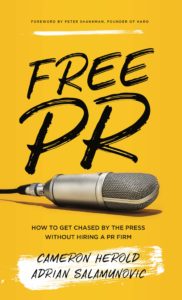
The Clint Arthur episode and Cameron Herold has a great book called Free PR and he was a guest. That’s a little different angle talking more about getting journalist and so forth to pick up on your pitches, but between those two episodes, definitely, they’re going to set you up for a whole new level of success. Are you going to take my challenge and make some cold calls at 4 in the morning? What do you think, Allen?
Absolutely. I love that. That’s a great strategy. The only problem I can say for that is I’ve got to face the radio. Which is why I fear, I podcast a lot.
Oh my God. You need to listen to my other show Get Yourself Optimized because there are some really great personal development episodes about how to love yourself. You are a beautiful soul inside and out. I’m sure that any TV producer who has worth their soul is going to just be falling all over themselves to have you on TV.
I appreciate that, Stephan.
We don’t have much time left. I wanted to just switch to a lightning round for the last couple of minutes. Are you game?
Sure! Let’s do it.
All right. What are your thoughts on partnerships and JVs? When I say JVs, I don’t mean the traditional joint ventures. I mean the strategic alliances that are basically I’ll mail for you, you mail for me, we’ll be on each other’s webinars sort of thing.
I think they’re great, especially when you’re aligned but not competitive. It’s a great way of acquiring customers at a very low cost.
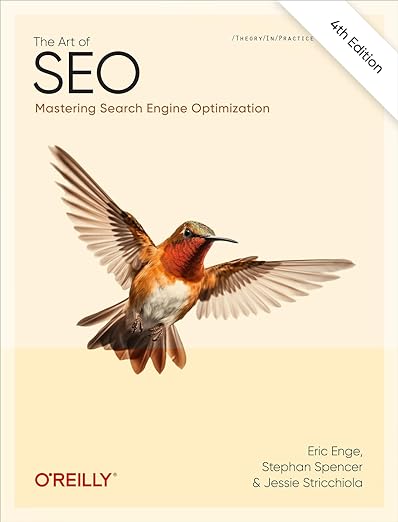
Okay. How about competitive intelligence? Is there some sort of secret hack, or trick, or technique that you use that really helps you to understand what’s going on inside that competitor’s head? For example, I like to do specialized searches on Google. I’ve got this book besides the Art of SEO. I’ve got Google Power Search which is all about how to do power searches, power queries.
For example, let’s say, “marketing plan filetype:pdf OR filetype:doc OR filetype:docx confidential -template.” I have to do the “-template” because otherwise, I’m going to get a whole pile of templates back. That would be an example of getting a big pile of competitors for my industry. That is going to laser into business plans and marketing plans that were not meant for public consumption. Do you have any secret hacks like that to help understand what’s going on with competitors?
I don’t know if I got a secret hack. Really, what I do is I think you should buy your competitor’s products because that gives you a first-hand view of the customer experience, where the gaps are, what they’re doing wrong, what they’re doing right. I think you should be buying competitor products on a regular basis. At least mystery shopping your competitors to see how they are pitching, how they are offering what they offer. As I said, you don’t want to be over-focused on your competitors, but you need to know what’s happening in the competitive landscape.
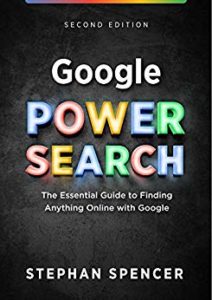
I love that. I don’t know that I love mystery shopping, that feels a little bit disingenuous, a little sketchy, gray hat to me, but I love the part about buying your competitor’s products. Let’s say you’re a competitor to Dollar Shave Club. In fact, one of my clients has 99centrazor.com, so they are competitors to Dollar Shave Club. They should sign up, they should get the product, they should get that experience of receiving the box in the mail and opening it up and what’s that experience like. I’ve never bought SEO from a competitor. Maybe I should do that.
There you go.
Last quick question. If folks wanted to take the next step beyond just reading your book and they wanted to take a course or go through your Boardroom Program, your Business Boardroom, what would be their process to get in the door and get evaluated by you and make sure that they put their best foot forward and get it?
You can basically join my mailing list on the website, which is successwise.com, on the contact page you can contact us and request coaching or request one of our other products. Really, we have our Business Boardroom Program, which is an intensive one-on-one coaching. We got a membership and we’ve got a course based on The 1-Page Marketing Plan book. They are the few ways we can engage, but really the best place is to start with the book, join in the conversation, opt-in on the mailing list, and we can talk further.
Awesome. Thank you so much, Allan. This was fabulous and entertaining, educational, and actionable. Which is really important because we love to hear great stories of successes and so forth, but what does it mean for us and how do we move our business forward. Thank you for bringing all of that to our listeners.
Allan, thank you again. We’ll catch you on the next episode of Marketing Speak. This is your host, Stephan Spencer, signing off.
Important Links
- Allan Dib
- LinkedIn – Allan Dib
- Twitter – Allan Dib
- Facebook – SuccessWise
- Instagram – SuccessWise
- LinkedIn – SuccessWise
- Download the 1-Page Marketing Plan Canvas for Free
- Why you need direct response marketing
- The 1-Page Marketing Plan
- Art of War
- Never Lose a Customer Again
- Purple Cow
- Free PR
- Art of SEO
- Google Power Search
- Joey Coleman – previous episode
- Seth Godin – previous episode
- Bob Cialdini – previous episode
- Dr. Flint McGlaughlin – previous episode
- Daniel Harmon – previous episode
- Clint Arthur – previous episode
- Cameron Herold – previous episode
- Business Review Weekly
- War and Peace
- Neil Armstrong
- Jeff Bezos
- Blockbuster Video
- Netflix
- Hulu
- Disney+
- Tony Robbins’ Platinum Partnership
- Robert Cialdini
- Dan Kennedy
- MECLABS
- Marketing Sherpa
- Woot.com
- Dollar Shave Club
- Squatty Potty
- Harmon Brothers
- Blendtec
- Greg Wright
- Tom Dickson
- Willitblend.com
- Forbes
- Business.com
- Thrive Global
- Chanel
- Sony
- Zappos
- Volvo
- 99centrazor.com
- Mr. Rogers
Your Checklist of Actions to Take










About Allan Dib
 Allan Dib is a serial entrepreneur, rebellious marketer, technology expert, and #1 bestselling author. He has started, grown and successfully exited multiple businesses in various industries. Allan grew his business from startup to four years later being named by Business Review Weekly (BRW) as one of Australia’s fastest-growing companies.
Allan Dib is a serial entrepreneur, rebellious marketer, technology expert, and #1 bestselling author. He has started, grown and successfully exited multiple businesses in various industries. Allan grew his business from startup to four years later being named by Business Review Weekly (BRW) as one of Australia’s fastest-growing companies.







Leave a Reply